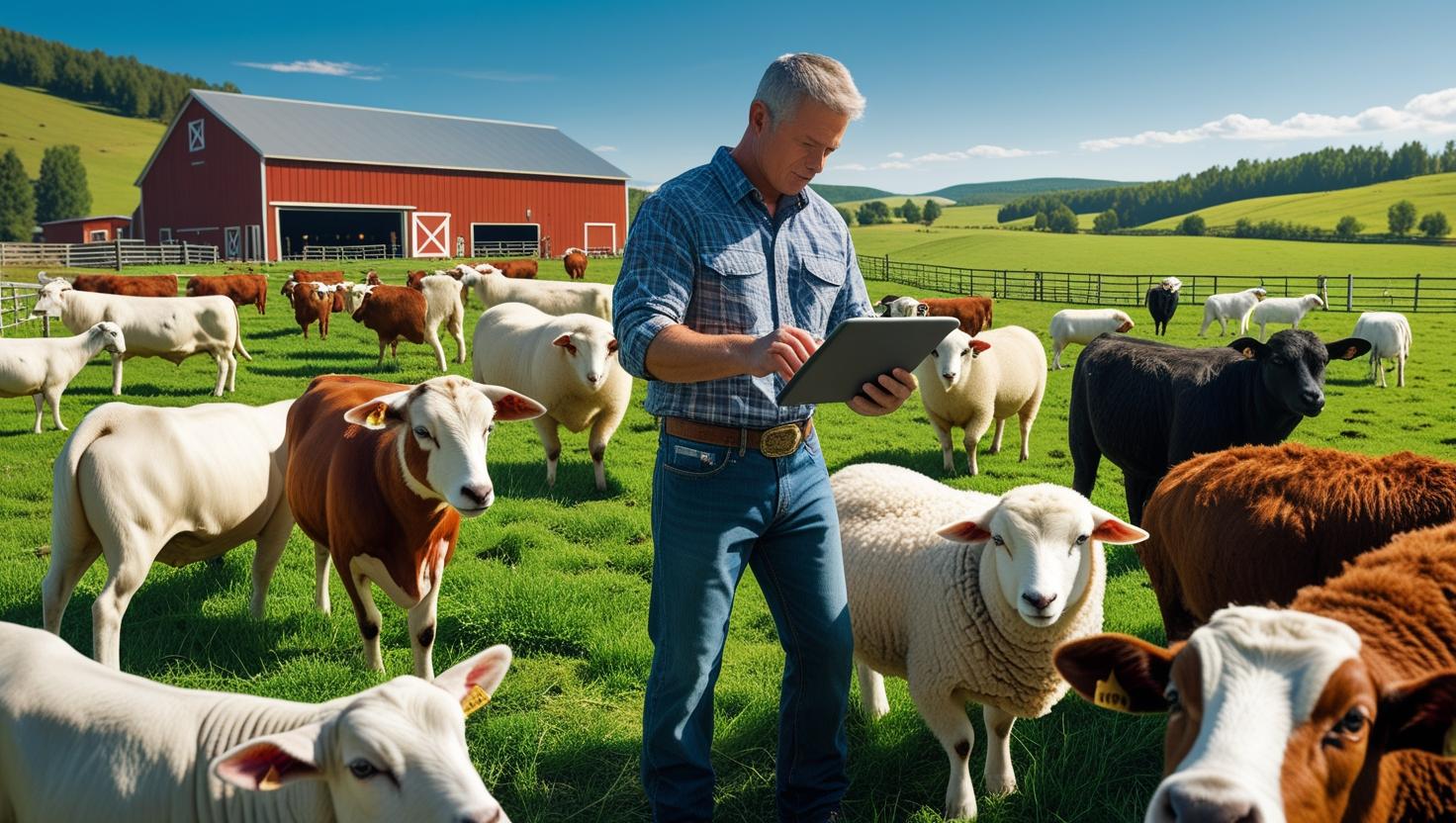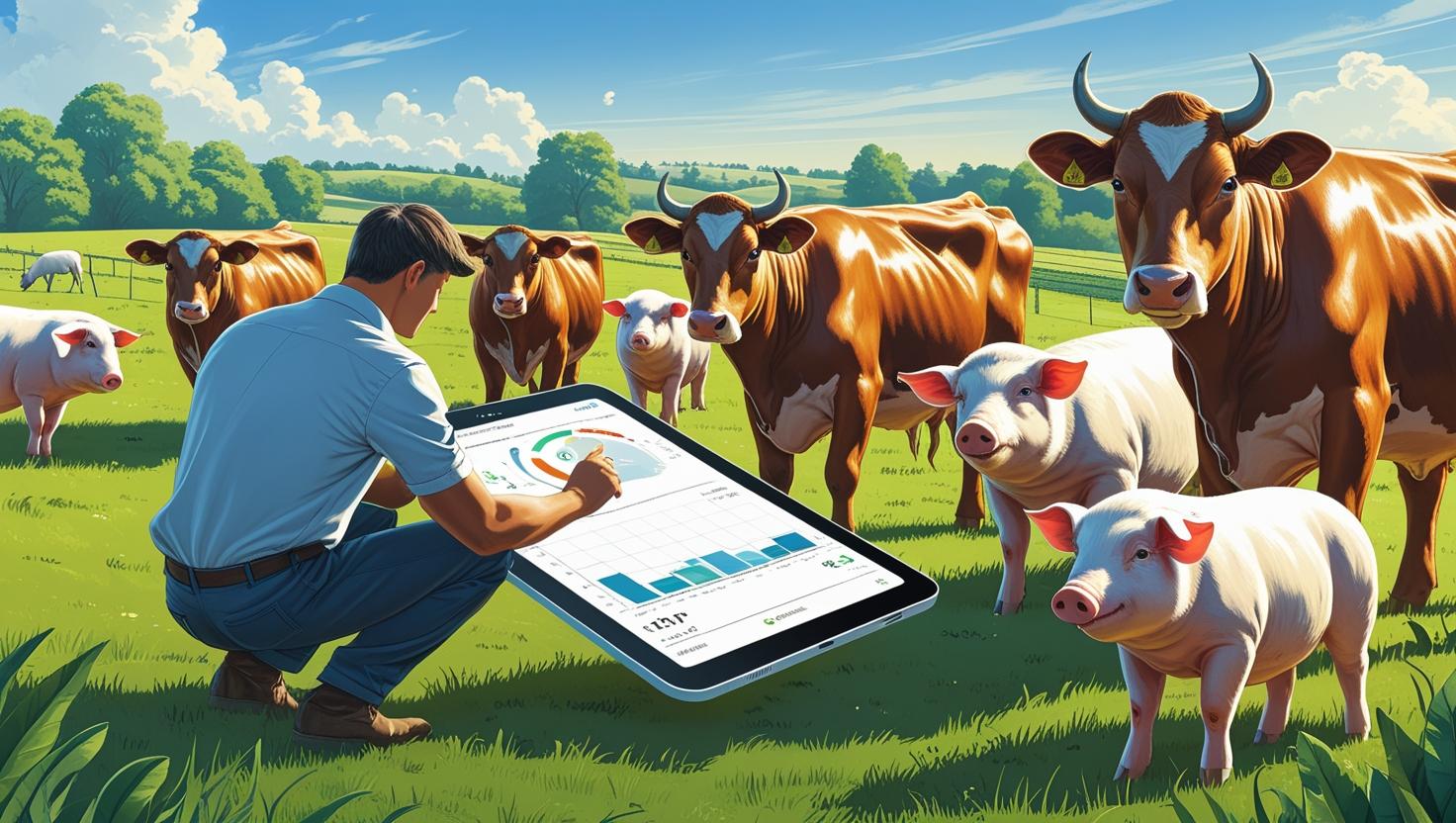The Livestock Health Monitoring Market is experiencing unprecedented growth, driven by the increasing demand for sustainable and efficient livestock management practices. As global populations rise and the demand for animal-derived products like meat, milk, and eggs surges, ensuring the health and productivity of livestock has become paramount. Advanced technologies such as wearable sensors, IoT devices, and data analytics are transforming how farmers and veterinarians monitor and manage animal health, leading to better productivity, reduced losses, and enhanced animal welfare. This article delves into the intricacies of the Livestock Health Monitoring Market, exploring its key drivers, technological advancements, market trends, challenges, and future opportunities.
The importance of livestock health monitoring cannot be overstated. With the global livestock population exceeding billions, maintaining their health directly impacts food security, economic stability, and environmental sustainability. The integration of smart technologies in animal husbandry is enabling real-time health tracking, early disease detection, and optimized farm operations. The Livestock Health Monitoring Market is poised for significant expansion as stakeholders across the agricultural sector recognize its potential to revolutionize traditional farming practices.
The Livestock Health Monitoring Market size is projected to grow from USD 1.65 billion in 2025 to USD 2.57 billion in 2031, at a CAGR of 7.7%.

Key Drivers Fueling Growth in the Livestock Health Monitoring Market
Several factors are propelling the growth of the Livestock Health Monitoring Market, making it a dynamic and lucrative sector. These drivers reflect the evolving needs of the global agricultural industry and the increasing adoption of technology in farming operations. Below are the primary forces shaping the market’s expansion:
-
Technological Advancements in IoT and AI: Innovations in Internet of Things (IoT) devices, artificial intelligence (AI), and machine learning are enabling real-time monitoring and predictive analytics, transforming livestock health management.
-
Focus on Animal Welfare: Increasing consumer awareness of ethical farming practices is pushing farmers to adopt health monitoring systems to ensure humane treatment and better living conditions for livestock.
-
Government Support and Regulations: Governments worldwide are implementing policies to promote precision livestock farming, offering subsidies and incentives for adopting smart technologies.
-
Need for Disease Prevention: Outbreaks of diseases like avian influenza and African swine fever have highlighted the importance of early detection and prevention, boosting demand for monitoring solutions.
Technological Innovations Shaping the Livestock Health Monitoring Market
The Livestock Health Monitoring Market is at the forefront of technological innovation, with cutting-edge solutions redefining animal husbandry. These technologies enable farmers to monitor vital health parameters, track behavior, and optimize farm operations with unprecedented precision. The following advancements are shaping the market’s trajectory:
-
Wearable Sensors and Devices: Smart collars, ear tags, and rumen boluses equipped with sensors monitor vital signs such as heart rate, temperature, and activity levels. These devices provide real-time data, enabling early detection of health issues.
-
IoT and Connectivity Solutions: IoT-enabled devices connect livestock data to cloud-based platforms, allowing farmers to access insights remotely via smartphones or computers.
-
AI and Machine Learning: AI algorithms analyze vast datasets to predict health risks, identify behavioral patterns, and recommend interventions, enhancing decision-making.
-
Drones and Imaging Technologies: Drones equipped with thermal imaging and AI analyze livestock behavior and environmental conditions, identifying stress or illness in large herds.
-
Blockchain for Traceability: Blockchain technology ensures transparency in livestock health records, supporting supply chain integrity and consumer trust.
These technological advancements are not only improving farm efficiency but also contributing to the sustainability of the Livestock Health Monitoring Market by reducing resource waste and environmental impact.
Market Segmentation: Exploring the Diverse Applications of Livestock Health Monitoring
The Livestock Health Monitoring Market is segmented based on product type, livestock type, application, and region, reflecting its diverse applications across the agricultural sector. Understanding these segments provides insight into the market’s versatility and growth potential.
By Product Type
The market includes hardware (sensors, wearables, RFID tags), software (data analytics platforms, farm management systems), and services (consulting, maintenance, and support). Hardware dominates due to the widespread adoption of wearable devices, while software is gaining traction for its role in data integration and analysis.
By Livestock Type
Cattle, poultry, swine, and other animals (sheep, goats) are the primary focus. Cattle monitoring holds the largest market share, driven by the global demand for beef and dairy. Poultry and swine segments are also growing rapidly due to intensive farming practices.
By Application
Applications include health monitoring, behavior monitoring, reproduction management, and feeding management. Health monitoring is the largest segment, as early disease detection remains a priority for farmers.
By Region
North America leads the Livestock Health Monitoring Market due to its advanced agricultural infrastructure and high technology adoption. Europe follows closely, driven by stringent animal welfare regulations. Asia-Pacific is the fastest-growing region, fueled by increasing meat consumption and government initiatives in countries like China and India.
Current Trends Influencing the Livestock Health Monitoring Market
The Livestock Health Monitoring Market is evolving rapidly, with several trends shaping its future. These trends reflect the industry’s shift toward precision farming and sustainability. Key trends include:
-
Adoption of Precision Livestock Farming: Precision farming techniques, enabled by IoT and AI, are becoming mainstream, allowing farmers to monitor individual animals and optimize resources.
-
Integration of Big Data Analytics: Big data is transforming livestock management by providing insights into herd health, productivity, and environmental impact.
-
Rise of Wearable Technology: Wearable devices are becoming more affordable and sophisticated, driving their adoption among small and medium-sized farms.
-
Focus on Sustainability: Monitoring systems are helping farmers reduce antibiotic use and minimize environmental footprints, aligning with global sustainability goals.
-
Collaborations and Partnerships: Technology providers are partnering with agricultural organizations to develop tailored solutions, expanding market reach.
These trends underscore the dynamic nature of the Livestock Health Monitoring Market, highlighting its potential to address modern farming challenges.
Challenges Facing the Livestock Health Monitoring Market
Despite its promising growth, the Livestock Health Monitoring Market faces several challenges that could hinder its expansion. Addressing these obstacles is critical for sustained market development.
High Initial Costs
The cost of deploying advanced monitoring systems, including hardware, software, and training, can be prohibitive for smallholder farmers, particularly in developing regions.
Data Privacy and Security Concerns
The use of cloud-based platforms raises concerns about data privacy and cybersecurity, as sensitive farm data could be vulnerable to breaches.
Lack of Technical Expertise
Many farmers lack the technical skills required to operate sophisticated monitoring systems, necessitating extensive training and support.
Interoperability Issues
The lack of standardization among devices and platforms can lead to compatibility issues, limiting the seamless integration of technologies.
Resistance to Technology Adoption
Traditional farmers may be hesitant to adopt new technologies due to cultural or financial barriers, slowing market penetration in certain regions.
Overcoming these challenges requires concerted efforts from technology providers, governments, and agricultural stakeholders to make solutions more accessible and user-friendly.
Opportunities for Growth in the Livestock Health Monitoring Market
The Livestock Health Monitoring Market offers significant opportunities for innovation and expansion. As the agricultural sector embraces digital transformation, the following opportunities are emerging:
-
Expansion in Emerging Markets: Rapid urbanization and rising meat consumption in Asia-Pacific and Africa present untapped markets for monitoring solutions.
-
Development of Cost-Effective Solutions: Affordable devices and subscription-based models can make technology accessible to smallholder farmers.
-
Integration with Smart Farming Ecosystems: Combining health monitoring with other smart farming technologies, such as automated feeding systems, can enhance efficiency.
-
Focus on Predictive Analytics: Advances in AI and machine learning can improve predictive capabilities, enabling proactive health management.
-
Government Incentives: Subsidies and grants for precision farming can drive adoption, particularly in developing countries.
These opportunities position the Livestock Health Monitoring Market as a key player in the future of agriculture, with potential to transform global food systems.

Regional Analysis of the Livestock Health Monitoring Market
The Livestock Health Monitoring Market exhibits regional variations, influenced by economic, technological, and cultural factors. Below is an analysis of key regions:
North America
North America dominates the market due to its advanced agricultural infrastructure, high technology adoption, and strong focus on animal welfare. The U.S. leads with significant investments in precision farming technologies.
Europe
Europe is a major market, driven by stringent regulations on animal health and welfare. Countries like Germany, France, and the Netherlands are adopting advanced monitoring systems to comply with EU standards.
Asia-Pacific
The Asia-Pacific region is the fastest-growing market, fueled by increasing meat consumption, government support, and a growing middle class. China and India are key contributors, with rising investments in smart agriculture.
Latin America
Latin America is emerging as a significant market, particularly in Brazil and Argentina, where large-scale livestock farming is prevalent. Technology adoption is growing, supported by export-driven economies.
Middle East and Africa
The Middle East and Africa are witnessing gradual growth, driven by the need to enhance food security and reduce reliance on imports. However, high costs and limited infrastructure pose challenges.
Download PDF Brochure for More Info @ https://www.marketsandmarkets.com/pdfdownloadNew.asp?id=72634532
Competitive Landscape of the Livestock Health Monitoring Market
The Livestock Health Monitoring Market is highly competitive, with numerous players offering innovative solutions. Key companies include:
-
Allflex (Merck Animal Health): A leader in livestock identification and monitoring, offering smart ear tags and data analytics platforms.
-
Zoetis: Known for its veterinary diagnostics and health monitoring solutions, Zoetis integrates AI and IoT for comprehensive animal health management.
-
DeLaval: Specializes in dairy farming solutions, including automated milking systems and health monitoring devices.
-
Nedap: Offers advanced livestock management systems, focusing on real-time monitoring and data integration.
-
Cainthus: Utilizes AI and vision technology for behavior and health monitoring, particularly in dairy and beef cattle.
These companies are investing heavily in R&D to develop innovative products and expand their market presence, intensifying competition in the Livestock Health Monitoring Market.
Future Outlook for the Livestock Health Monitoring Market
The Livestock Health Monitoring Market is poised for robust growth over the next decade, driven by technological advancements and increasing demand for sustainable farming practices. Emerging markets, particularly in Asia-Pacific and Africa, will play a pivotal role in this expansion, as governments and private sectors invest in modernizing agriculture.
The integration of blockchain, predictive analytics, and 5G connectivity will further enhance the capabilities of monitoring systems, enabling real-time decision-making and improved traceability. As consumer awareness of ethical farming grows, the Livestock Health Monitoring Market will continue to evolve, prioritizing animal welfare and environmental sustainability.
Explore In-Depth Semiconductor & Electronics Market Research –https://www.marketsandmarkets.com/semiconductorand-electonics-market-research-87.html
FAQs
What is the Livestock Health Monitoring Market?
The Livestock Health Monitoring Market refers to the industry focused on technologies and solutions for monitoring the health, behavior, and productivity of livestock, including wearable sensors, IoT devices, and data analytics platforms.
What are the key technologies in the Livestock Health Monitoring Market?
Key technologies include wearable sensors, IoT connectivity, AI and machine learning, drones, and blockchain for health tracking and traceability.
What drives the growth of the Livestock Health Monitoring Market?
Growth is driven by rising demand for animal-derived products, technological advancements, focus on animal welfare, government support, and the need for disease prevention.
Which regions dominate the Livestock Health Monitoring Market?
North America and Europe lead the market, while Asia-Pacific is the fastest-growing region due to increasing meat consumption and government initiatives.
What are the challenges in the Livestock Health Monitoring Market?
Challenges include high initial costs, data privacy concerns, lack of technical expertise, interoperability issues, and resistance to technology adoption.
How does the Livestock Health Monitoring Market contribute to sustainability?
It promotes sustainable farming by reducing antibiotic use, optimizing resources, and minimizing environmental impact through precise health management.
See The Latest Semiconductor Reports:
Infrared Imaging Market Size, Share & Trends : https://www.marketsandmarkets.com/Market-Reports/infrared-IR-sensing-imaging-market-593.html
Submarine Cable Systems Market Size, Share & Trends : https://www.marketsandmarkets.com/Market-Reports/submarine-cable-system-market-184625.html
SCADA Market Size, Share & Trends : https://www.marketsandmarkets.com/Market-Reports/scada-market-19487518.html
Digital Twin Market Size, Share & Trends : https://www.marketsandmarkets.com/Market-Reports/digital-twin-market-225269522.html
Automotive AI Market Size, Share & Trends: https://www.marketsandmarkets.com/Market-Reports/automotive-artificial-intelligence-market-248804391.html
